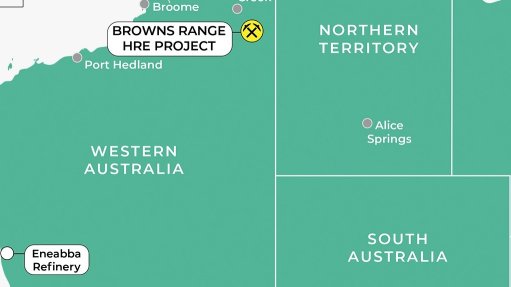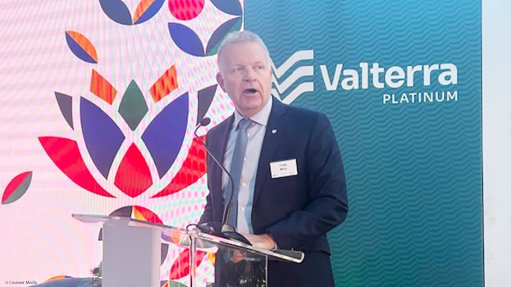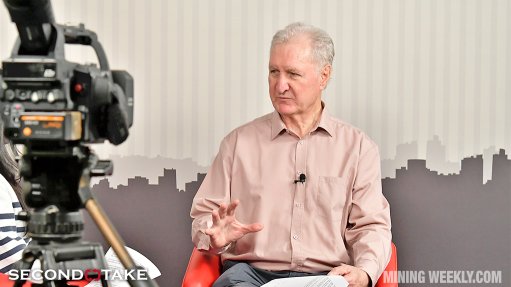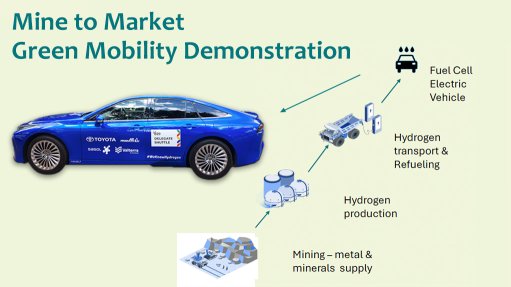Services, not manufacturing, Africa’s silver growth bullet – Wooldridge
While a resurgence in manufacturing in Africa has been popularly touted as the silver bullet that will accelerate the continent’s economic growth prospects, The Economist management editor and columnist Adrian Wooldridge has suggested that Africa’s industrial renaissance may well be scuppered by the continued emergence of highly technology-based manufacturing available only in developed industrial regions.
Drawing on assertions contained in his book, The Great Disruption: How Business is Coping with Turbulent Times, the former bureau chief said that, while the first decade of the current century could be considered the continent’s “golden” years, in which it drew substantial fresh investment from established markets, the recent slowdown in this growth was the likely aftermath of a return of manufacturing capacity to developed States.
“What we’re seeing is a manufacturing revo-lution in which manufacturing is being driven by high-technology and services and the Internet of Things. This is resulting in manufacturing shifting back to areas with bigger clusters of available technology, such as Silicon Valley, in the US.
“Perhaps more worrying is that [manufacturing] contracts that have been outsourced to Africa and other emerging markets may have reached their limit . . . seeing developed nations reclaim the jobs lost to emerging markets. The rich world [could] be pulling ahead of emerging markets again,” Wooldridge said during a recent talk at think-tank the Centre for Development and Enterprise, in Johannesburg.
He further described a manufacturing revolution in which the software technology contained within a product was becoming more important than the product itself.
“The software is eating the hardware . . . [and] the frontiers of knowledge are being mechanised, which means that [manufacturers] need to be where the hot technology [and] the desire to contract out to emerging markets are becoming less likely,” he reasoned.
Accordingly, the road to a middle-income African economic reality was not in manufacturing, but rather in the services industry, in which service roles could be filled by Africans with access to the Internet.
“Jobs in emerging markets could well come from things that can be virtualised, making things like broadband on the continent important,” Wooldridge asserted.
Noting that companies were becoming increas- ingly “asset light” – both in terms of a permanent workforce and a fixed geographic location – he said this offered opportunity for the development of a satellite service industry in Africa.
This trend towards the ‘virtualisation’ of companies, as evidenced by multibillion-dollar market newbies Uber and Airbnb, represented a global creative disruption of the traditional fixed-asset, permanent-workforce-reliant conglomerate, said Wooldridge.
This trend was driven by a dramatic technological revolution that would result in the collapse, he argued, of numerous long-successful internationals and the conception of a new generation of infant, rapidly expanding companies.
“The building blocks of companies are changing rapidly,” he affirmed.
Wooldridge’s downplaying of the importance of manufacturing in Africa’s growth story came almost a month after it was revealed that price instability and weak performance had hammered South Africa’s manufacturing sector, with all major sectors under the manufacturing umbrella demonstrating worrying underperformance.
Engineering News, at the beginning of November, quoted Steel and Engineering Industries Federation of Southern Africa chief economist Henk Langenhoven as saying that there was also “incredible instability” in commo-dity prices, which made planning “almost impos-sible”, and that export demand was currently weak in numerous manufacturing subsectors.
He said, at the time, that the South African market was too small to sustain major technologically advanced investment.
“If we don’t find our niches and understand the dynamics around them, it’s going to be dire,” he warned.
Article Enquiry
Email Article
Save Article
Feedback
To advertise email advertising@creamermedia.co.za or click here
Announcements
What's On
Subscribe to improve your user experience...
Option 1 (equivalent of R125 a month):
Receive a weekly copy of Creamer Media's Engineering News & Mining Weekly magazine
(print copy for those in South Africa and e-magazine for those outside of South Africa)
Receive daily email newsletters
Access to full search results
Access archive of magazine back copies
Access to Projects in Progress
Access to ONE Research Report of your choice in PDF format
Option 2 (equivalent of R375 a month):
All benefits from Option 1
PLUS
Access to Creamer Media's Research Channel Africa for ALL Research Reports, in PDF format, on various industrial and mining sectors
including Electricity; Water; Energy Transition; Hydrogen; Roads, Rail and Ports; Coal; Gold; Platinum; Battery Metals; etc.
Already a subscriber?
Forgotten your password?
Receive weekly copy of Creamer Media's Engineering News & Mining Weekly magazine (print copy for those in South Africa and e-magazine for those outside of South Africa)
➕
Recieve daily email newsletters
➕
Access to full search results
➕
Access archive of magazine back copies
➕
Access to Projects in Progress
➕
Access to ONE Research Report of your choice in PDF format
RESEARCH CHANNEL AFRICA
R4500 (equivalent of R375 a month)
SUBSCRIBEAll benefits from Option 1
➕
Access to Creamer Media's Research Channel Africa for ALL Research Reports on various industrial and mining sectors, in PDF format, including on:
Electricity
➕
Water
➕
Energy Transition
➕
Hydrogen
➕
Roads, Rail and Ports
➕
Coal
➕
Gold
➕
Platinum
➕
Battery Metals
➕
etc.
Receive all benefits from Option 1 or Option 2 delivered to numerous people at your company
➕
Multiple User names and Passwords for simultaneous log-ins
➕
Intranet integration access to all in your organisation


















